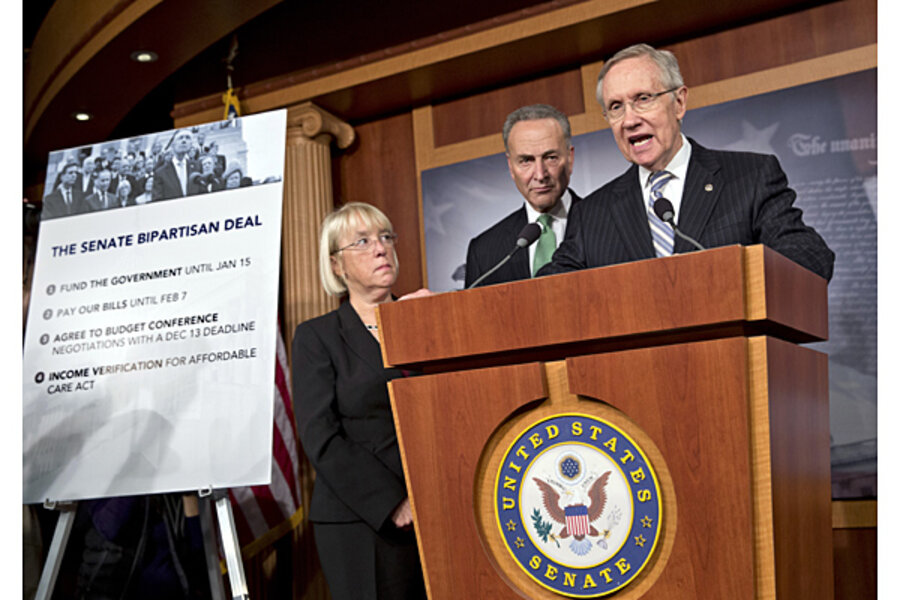The government shutdown was about...a meeting
Like Seinfeld, the classic 1990s TV comedy, Congress is increasingly about…nothing.
If the agreement reached by Senate leaders yesterday sticks (and given recent history, even that is uncertain) Congress has just shuttered much of the federal government for more than two weeks and risked a market-shattering federal default in order to convene a meeting of budget negotiators.
According to published reports, that is pretty much the sum total of what lawmakers agreed to today. They will reopen the government until Jan. 15 and give the Treasury renewed authority to borrow money until Feb. 7. This will give Congress and President Obama another three months of artificial fiscal crisis, generate more breathless headlines, and almost certainly drive Washington’s standing with the public even closer to rock bottom.
As a result of this frantic last-minute deal, it is a virtual certainty that we will be in exactly the same place in mid-January as we are today, only colder.
Between now and then, we will return to the status quo ante. The GOP’s Quixotic and self-destructive efforts to demolish the Affordable Care Act have come to naught. The law is not defunded. The individual mandate is not delayed. Even the tax on medical device makers remains.
The GOP did win one concession: The government must do its utmost to prevent low-income people from lying about their income in order to get health insurance. Otherwise, the 2010 health law goes on unchanged.
Meanwhile, Democrats will have three months to relitigate the across-the-board spending cuts known as the sequester. They conceded at the very beginning of the most recent contretemps that they’d accept ongoing government funding at current sequester levels for the duration of any new spending bill.
Given how matters turned out, they probably regret that quick capitulation. But fear not, they’ll have the opportunity to fight another day. It is in fact why Democrats, not Republicans, ended up insisting on a short-term spending bill as part of today’s agreement.
The next turn of the budget screw is scheduled for Jan. 15 when lower 2014 spending levels are due to bite under the next round of the sequester. Today’s deal opens the door for a new fight over those numbers.
Democrats will demand the next round of cuts be trimmed for domestic spending programs. Some Republicans will ask the same for military spending. Others will fight to maintain the cuts.
The hard-earned fiscal deal hammered out today calls for all this to get worked out—or not—in a budget conference.
Keep in mind the budget conferences used to be a routine part of Congress’ fiscal process. This conference should have begun last March—seven months ago– after the House and Senate passed their own versions of the 2014 fiscal blueprint.
But the panel never met. For months, Senate Democrats insisted on talks but House Republicans refused to even appoint negotiators. Then, just before the Oct 1 government shutdown, Republicans demanded a budget conference but Senate Democrats refused.
Now, the budget deal says…They should meet.
Lawmakers would instruct the negotiators to produce a 10-year tax and spending blueprint by Dec. 13. But they won’t require such a deal, and certainly won’t set any enforceable parameters for any agreement. Yesterday’s plan simply says they should meet and report something.
All this uncertainty and bitterness. All this lost credibility. All to schedule a meeting.





